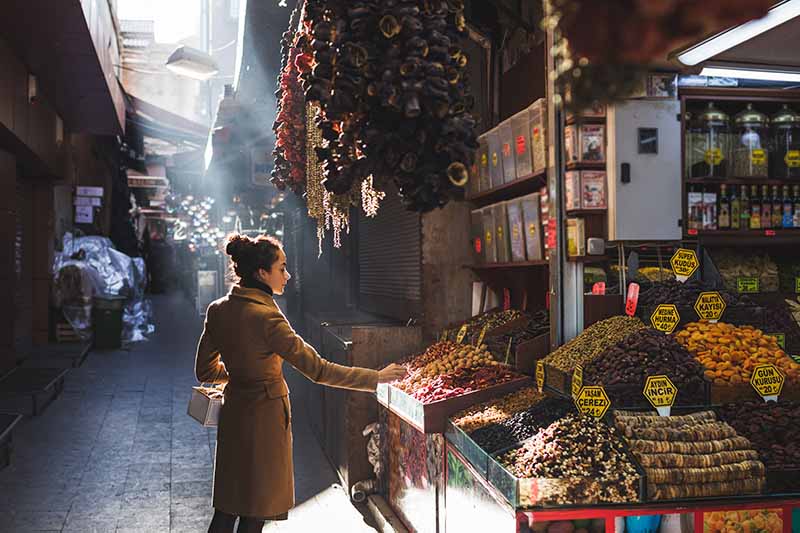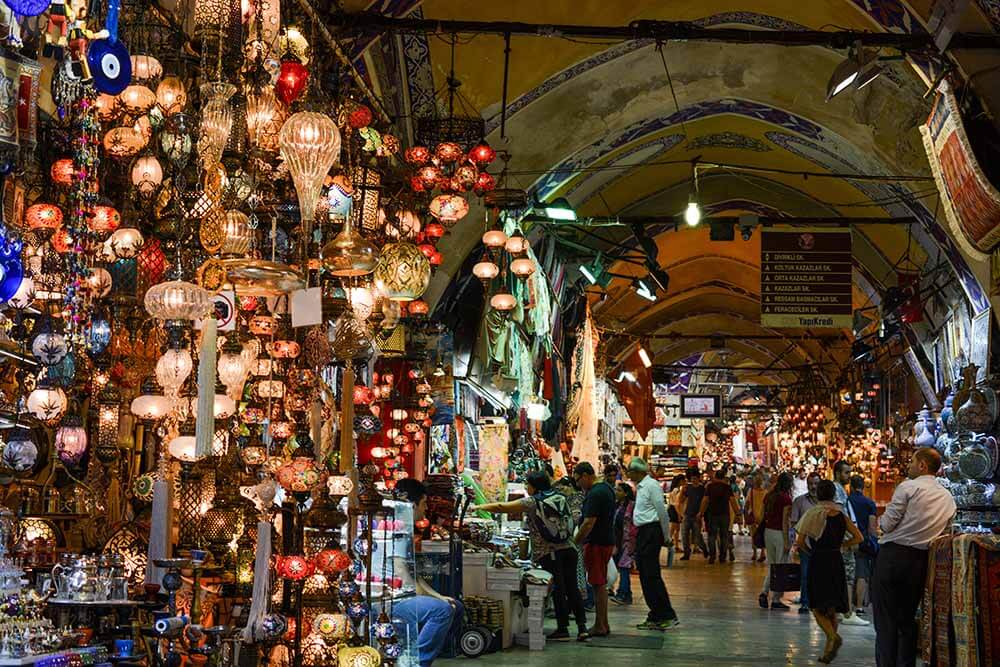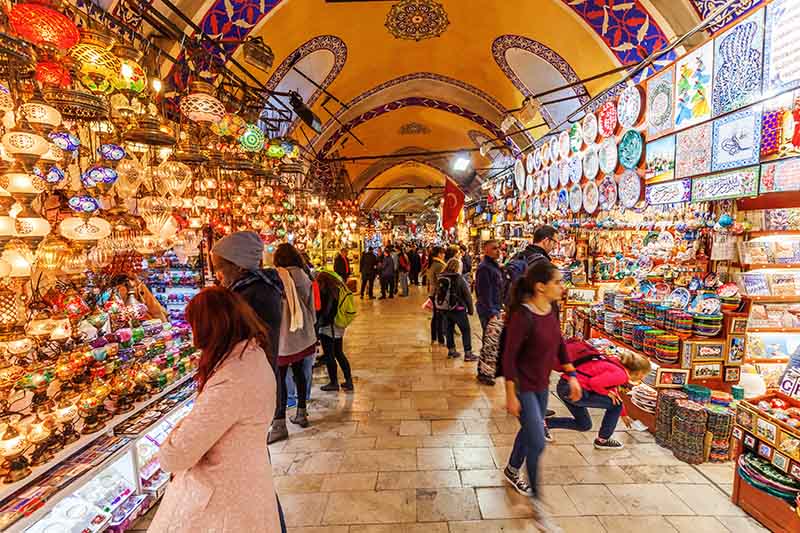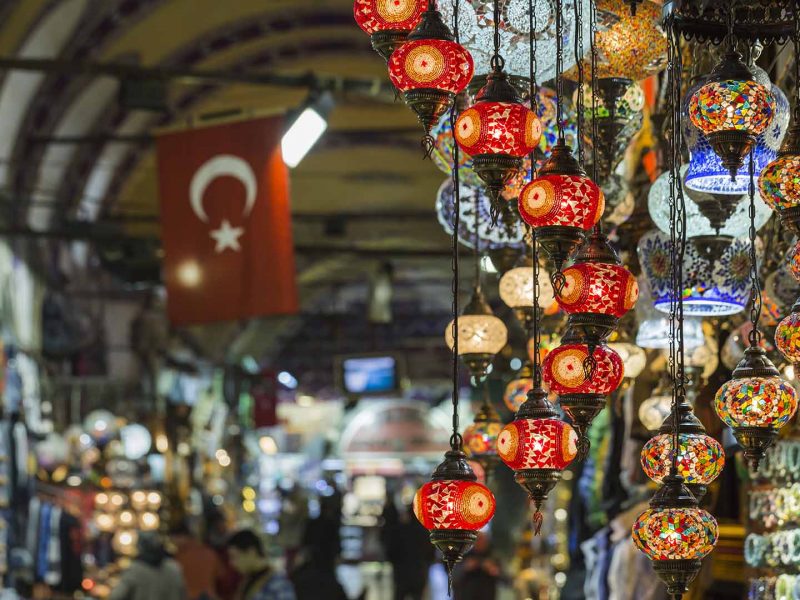One of the most renowned attractions of Istanbul is the Grand Bazaar, which is indispensable for travelers and writers. The Grand Bazaar is a trade center that began construction in the 1460s at the time of Fatih Sultan Mehmet.
Covered with drip and domed structures, it has often been used in films. It is also known in history by the name “Çarşu-yı Kebir”. After the conquest of Istanbul, the construction of the trade center was started under the order of the Sultan, with the goal of bringing commerce in İstanbul to life, especially by creating space in which the artisans could work. The Grand Bazaar later underwent renovations during the period of Suleiman the Magnificent, and its present style reflects the last restoration in 1894. It continues to maintain the commercial pulse of some sectors.
Architectural Characteristics of the Grand Bazaar
Two different covered bazaars (bedestens) exist as the core part of the Grand Bazaar. The first one is the Cevahir Bedesten, which was built during the installation phase, and the second one is the New Bedesten which was built in 1461. It is also known as “Sandal Bedesten” by the people. These two bedestens are the both important tourist attractions. Cevahir Bedesten itself is divided into 15 different divisions and has a very beautiful appearance in terms of architecture. There is a big building with 50 domes in the Sandal Bedesten section.

The buyer tries goods at Grand Bazaar Istanbul.
The Grand Bazaar resembles a labyrinth in terms of its design. It is a large shopping center with 60 streets and over 3600 shops. It has a total area of 307,00 square meters, and although it was initially established within a guild system, it adapted to the changes of commercial life.
Grand Bazaar Shops
The Grand Bazaar has 21 different gates through which to enter, including Jewelers Gate, Kürkçüler Gate, Nuru Osmaniye Gate, Sorguçluhan Gate, Beyazıt Gate, Çarşı Gate, Örücüler Gate, Çuhacıhan Gate and Mahmutpaşa Gate. The streets that those gates open are named according to the shops there (i.e. textile sellers are in Basmacılar –cotton printers- Street). In addition to Basmacılar Street, there is Aynacılar (mirror sellers) Street, İplikçiler (thread sellers) Street, Kürkçüler (fur sellers) Street , Yüncü Hasan (wool seller Hasan) Street, Yorgancılar (blanket sellers) Street, and Zenneciler (dance stuff sellers) Street.

Mosaic Ottoman lamps from Grand Bazaar in Istanbul.
Once you enter from the streets, the inns welcome you. There are different locations such as Aga Inn, Bodrum Inn, Çuhacı Inn, Kebapçı Inn, Kaşıkçı Inn.
Fire Disasters in the Historic Grand Bazaar
The Grand Bazaar was built during the reign of Fatih Sultan Mehmet and had a wood-based restoration during the reign of Süleyman the Magnificent. From this date, there were many fire disasters in the Grand Bazaar. There was significant damage due to the great fire on 1651, and in 1954, the tradesmen had to face a tremendous fire catastrophe. In addition, the Grand Bazaar was damaged in a significant way during Istanbul earthquakes that took throughout different periods. After all that damage, with the modification after the earthquake of 1894, today’s stone-based, domed structure emerged.

Grand Bazaar is one of the largest and oldest covered markets in the world, with 61 covered streets and over 3,000 shops.
The Grand Bazaar in Today
The Grand Bazaar still keeps the pulse of commercial life going and is mostly frequented by tourists. Jewelers, artisans, calligraphers, sellers of rugs and antiques, and carpenters who sell handcrafted products stand out. As of today, 20,000 people work in 64 streets, two bedestens, and 16 inns in the Grand Bazaar. Especially in the summer, the number of daily visitors can exceed five hundred thousand.
Operation Times
The Grand Bazaar, which was open 24 hours a day during the Ottoman era, is now operating between designated hours. The covered bazaar is open for visiting and shopping every day but Sunday, between 8.30 a.m. and 7:00 p.m.

